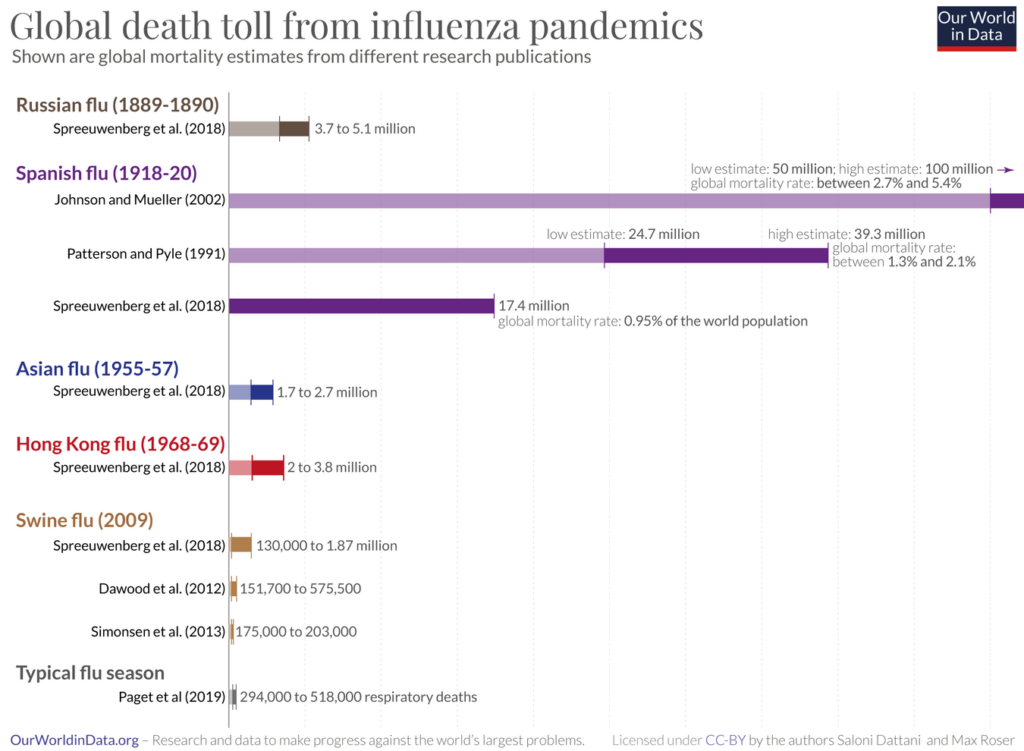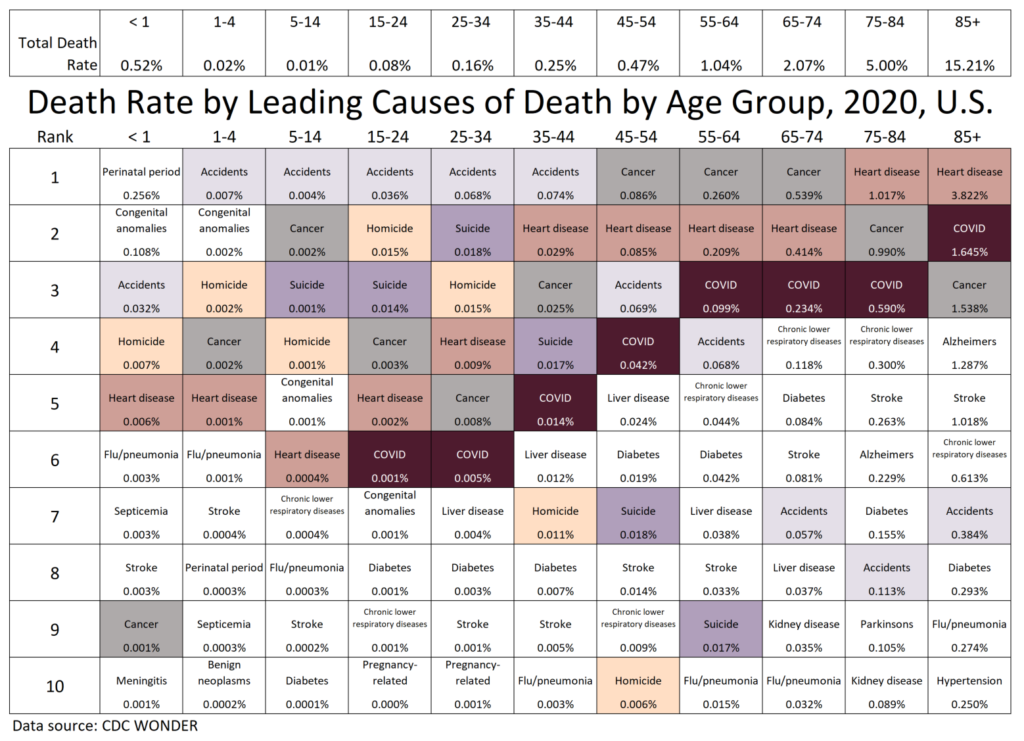Link: https://ourworldindata.org/spanish-flu-largest-influenza-pandemic-in-history
Graphic:

Excerpt:
Estimates suggest that the world population in 1918 was 1.8 billion.
Based on this, the low estimate of 17.4 million deaths by Spreeuwenberg et al. (2018) implies that the Spanish flu killed almost 1% of the world population.9
The estimate of 50 million deaths published by Johnson and Mueller implies that the Spanish flu killed 2.7% of the world population. And if it was in fact higher – 100 million as these authors suggest – then the global death rate would have been 5.4%.10
The world population was growing by around 13 million every year in this period which suggests that the period of the Spanish flu was likely the last time in history when the world population was declining.11
Author(s): Max Roser
Publication Date: 4 Mar 202
Publication Site: Our World in Data

